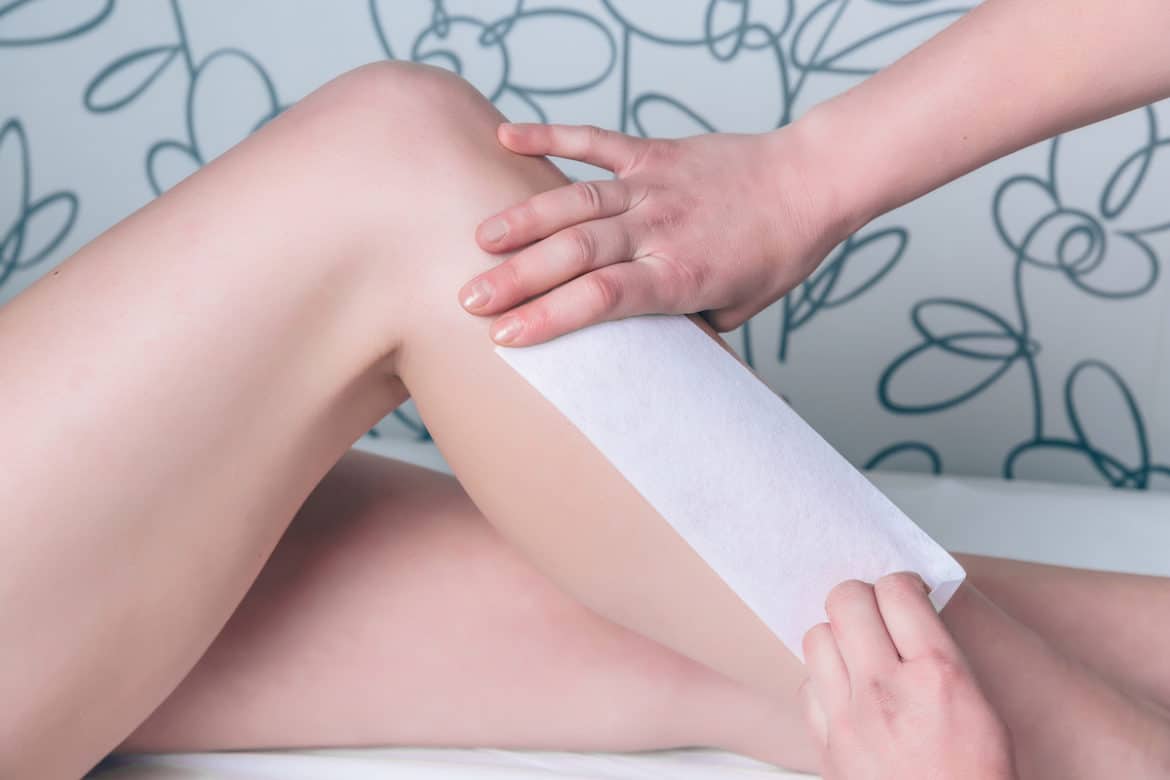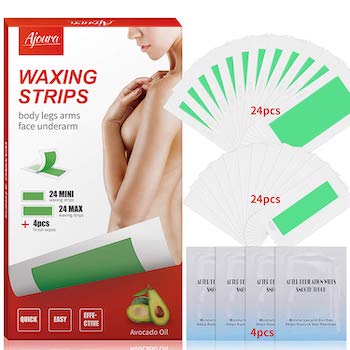When it comes to waxing, there are a few different options to choose from. The two main types of waxes used are hot waxes and cold waxes, and although both perform the same job of pulling hairs from the follicle, the two do have some significant differences, mainly with how they are used.
Cold wax, in particular, is pretty easy to use, and you do not need much preparation with the wax itself before you get started.
You can heat up hot wax cold, but can you heat up cold wax? Technically, the answer is yes, you can, but it’s not recommended, as cold wax is usually sold pre-applied to strips which are designed to be heated up ever so slightly using body warmth from your hands, then applied to the skin.
The Difference Between Hot Wax and Cold Wax
Hot wax is when melted wax is used for hair removal. The wax is applied to the skin while it is still warm, which also allows it to be spread evenly over the skin as well.
Soft hard wax needs a strip placed on top of it once it is on the skin, to help remove the wax, whereas hard hot wax can be removed from the skin as is with no strip needed.
As the hot wax cools on the skin, it molds onto the surface and grips each strand of hair and removes the hair when it is pulled quickly off the skin. Hot wax is what is traditionally used at a waxing salon.
Cold wax works in a very similar way to hot wax but does not require a heat source. It can be applied at a lukewarm temperature, or heated up by being rubbed between the hands.
When you buy cold wax, it can either come on its own (in which cause you’d need to purchase wax strips) or come prepared on a waxing strip. Cold wax is mainly used by those waxing at home, as it is fairly easy to use when on a strip and there is no risk of burning your skin with wax that is too hot.
Can I Heat Up Cold Wax?
Hot wax is regarded as being more effective than cold wax, as it adheres to the hair more and removes more hair with each pull.
However, many people at home choose to use cold wax purely because it is so much easier to work with, and you can travel with it without worrying about bringing a wax melter and wax application sticks.
With the effectiveness of hot wax, it might be tempting to try and heat up your cold wax strips at home. If you have cold wax which is pre-applied to strips, it might be really difficult to heat them up, and you might lose the integrity of the wax and the strip if heated up in the microwave.
You could always try heat it for a few seconds in the microwave, just enough to be slightly warm without the risk of burning your skin, to see if it makes any difference. Otherwise, simply rub the wax strip between your hands for warmth before applying it to your skin.
Cold wax does not work as well as hot wax to open up pores as much, which makes it slightly less effective, but it does make it more tolerable for people who are sensitive to heat.
How To Use Cold Wax
Using cold wax is beautifully simple, which is why it is such a great option to use at home. Following a few simple steps will allow you to achieve the best results possible with your cold wax.
- Exfoliate your skin two days before using cold wax to remove any dead skin cells and to prepare the surface of the skin for the cold wax to adhere to it more efficiently.
- Wash your skin before waxing to remove any products or impurities.
- Dry your skin to ensure that no moisture is left behind which will stop the cold wax strip from working well.
- Rub the wax strip between your hands to warm it up slightly to activate the wax.
- Firmly press the strip down in the direction of hair growth.
- Pull the skin taut before you pull the wax strip off of the skin.
- Quickly remove the cold wax strip from the skin in the opposite direction of hair growth to properly remove the hair from the follicles.
- Repeat this until you have removed all the hair from the area.
- Clean off any residual wax if there is any left behind with some coconut oil or specially designed post-wax oil.
The Benefits of Cold Wax
Many people choose to use cold waxing strips at home, as they are safer to use and make for a quicker and easier application. The benefits of cold wax make it a favorite for many, and while cold wax might not be as effective as hot wax, it does perform the job well enough to be used by plenty of people.
- Cold wax, especially in strips, is easy and quick to apply to the skin and sticks fairly easily to the smallest of hairs.
- The wax only needs to be applied to the skin for a few seconds before being pulled off, as it does not need to dry or set like hot wax.
- Using cold wax is less painful than warm wax, as you will not be using a wax which is hot and risking any burning.
- Cold wax is also less messy than hot wax, as the strips are already prepared and can be disposed of easily, whereas hot wax can become messy very quickly.
- Cold wax strips are also perfect to use for smaller and hard-to-reach areas of the body which are contoured, such as the face and bikini area. The strips can be cut into smaller pieces to suit specific areas of the body.
- Cold wax strips can be used a few times to remove all the hair until the strip loses its grip, whereas hot wax can only be used once as it hardens very quickly.
- Many cold wax strips contain soothing ingredients such as aloe vera, which help to calm and soothe the skin while still effectively removing the hair.
The Downfalls Of Cold Wax
Like with anything, cold wax has benefits and downfalls, and whether or not the benefits outweigh the downfalls are completely up to personal preference.
Here are some of the issues you might encounter when using cold wax:
- Cold wax often leaves a sticky residue behind on the skin, which will need to be removed with coconut oil, soapy water or with a warm and damp washcloth.
- Cold wax does not always remove hair from the root the first time around, and you might have to reapply the wax strip to the skin a few times before all the hair is removed from the area.
- Cold wax strips can increase the risk of irritation if used repeatedly to try to remove all the hair in one area within the same waxing application.
- Cold wax strips can at times be more expensive than hot wax, which is often sold in bulk bags of wax beads for a reduced price.
Related Questions
What are the disadvantages of waxing?
As effective as waxing is to remove hair, there are some disadvantages. Waxing can damage the skin by being too hot, or removing skin along with the hair.
Waxing can also lead to folliculitis, which is when the hair follicles which are left open from waxing come into contact with bacteria, or ingrown hairs which can become infected and really painful.
Which wax is best for winter?
Cold waxes are best to use in winter. Winter tends to be drier, and this means drier skin as well. Many cold wax strips come infused with caring agents such as aloe vera which help to protect the skin during the waxing process and give it some extra moisture and hydration to combat the dryness.
Is it okay to shave between waxes?
You should avoid shaving between waxes. Your hair needs to be at a certain length to be able to be properly waxed, and shaving between waxes can shorten the hair which will mean the wax will not adhere to the hair properly. Shaving also encourages the hair to grow back quicker, thicker and coarser.
Does hair grow back finer after waxing?
As waxing damages the hair follicles, it causes the hair to grow back thinner, finer and more slowly. Many people find that their hair growth is drastically reduced after years of continuous waxing.
Heating Cold Wax
One of the best features of cold wax is that it does not need to be heated any more than with a simple rub between the hands. This saves a whole lot of time and mess that comes with hot wax and is exactly why so many people choose to use cold wax strips.
You can try to warm up your cold wax strips in the microwave to encourage the wax to melt more, but this might damage the actual effectiveness of the wax and damage the strips as well.

